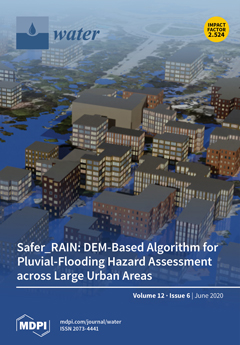Thermokarst lakes and ponds formed due to thawing of frozen peat in high-latitude lowlands are very dynamic and environmentally important aquatic systems that play a key role in controlling C emission to atmosphere and organic carbon (OC), nutrient, and metal lateral export to rivers and streams. However, despite the importance of thermokarst lakes in assessing biogeochemical functioning of permafrost peatlands in response to climate warming and permafrost thaw, spatial (lake size, permafrost zone) and temporal (seasonal) variations in thermokarst lake hydrochemistry remain very poorly studied. Here, we used unprecedented spatial coverage (isolated, sporadic, discontinuous, and continuous permafrost zone of the western Siberia Lowland) of 67 lakes ranging in size from 10
2 to 10
5 m
2 for sampling during three main hydrological periods of the year: spring flood, summer baseflow, and autumn time before ice-on. We demonstrate a systematic, all-season decrease in the concentration of dissolved OC (DOC) and an increase in SO
4, N-NO
3, and some metal (Mn, Co, Cu, Mo, Sr, U, Sb) concentration with an increase in lake surface area, depending on the type of the permafrost zone. These features are interpreted as a combination of (i) OC and organically bound metal leaching from peat at the lake shore, via abrasion and delivery of these compounds by suprapermafrost flow, and (ii) deep groundwater feeding of large lakes (especially visible in the continuous permafrost zone). Analyses of lake water chemical composition across the permafrost gradient allowed a first-order empirical prediction of lake hydrochemical changes in the case of climate warming and permafrost thaw, employing a substituting space for time scenario. The permafrost boundary shift northward may decrease the concentrations and pools of dissolved inorganic carbon (DIC), Li, B, Mg, K, Ca, Sr, Ba, Ni, Cu, As, Rb, Mo, Sr, Y, Zr, rare Earth elements (REEs), Th, and U by a factor of 2–5 in the continuous permafrost zone, but increase the concentrations of CH
4, DOC, NH
4, Cd, Sb, and Pb by a factor of 2–3. In contrast, the shift of the sporadic to isolated zone may produce a 2–5-fold decrease in CH
4, DOC, NH
4, Al, P, Ti, Cr, Ni, Ga, Zr, Nb, Cs, REEs, Hf, Th, and U. The exact magnitude of this response will, however, be strongly seasonally dependent, with the largest effects observable during baseflow seasons.
Full article





